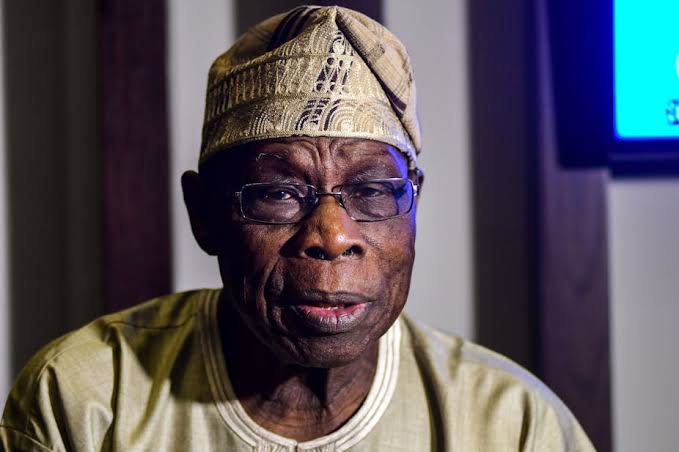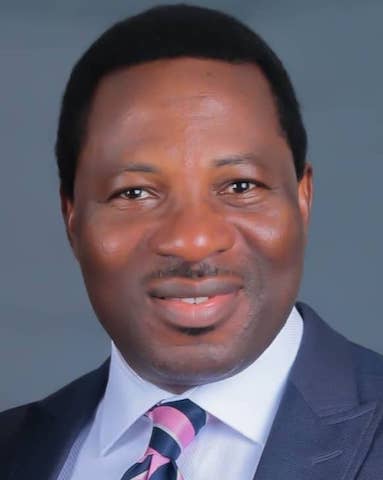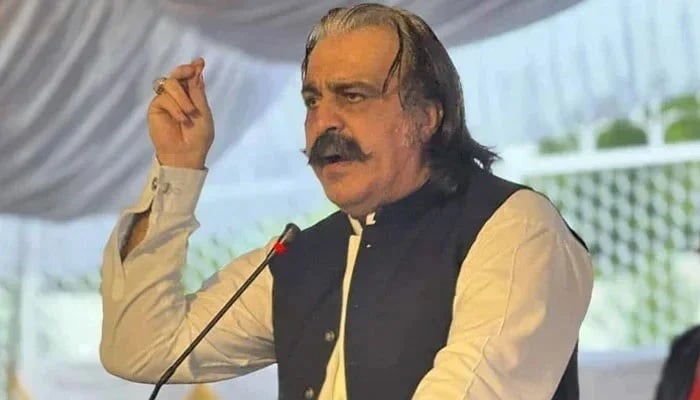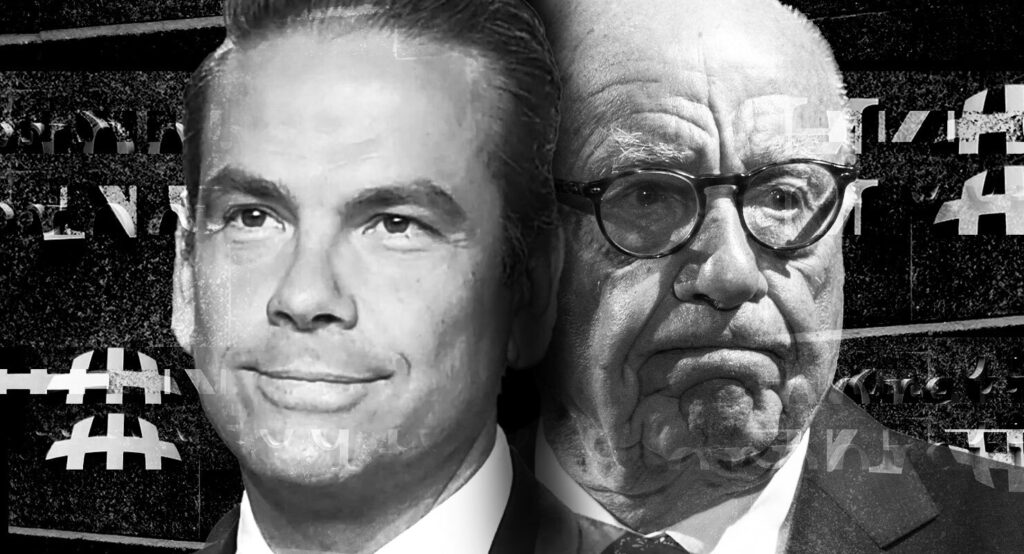Canada’s first ‘prisoner of conscience’ is an Indigenous land defender

Politics tamfitronics
In 2019, construction began on a natural gas pipeline that would cut through the unceded homelands of the Wet’suwet’en Nation in western Canada. Wet’suwet’en land and water protectors were forbidden from coming near the construction area operated by Coastal Gaslink, owned by TC Energy. However, the project was met almost immediately with resistance and gained international attention due to the tribe’s use of traditional law. Under Wet’suwet’en law, the pipeline trespassed on Wet’suwet’en land. With no treaty signed with Canada or Britain, Wet’suwet’en argue that their laws are still applicable — a political status recognized by the Canadian supreme court — and they have the right to evict Coastal Gaslink, and its pipeline, from its homelands.
In 2021, Chief Dsta’hyl, a Wet’suwet’en hereditary chief, and a group of land and water protectors commandeered a battery from a excavator owned by a Coastal Gaslink contractor, then a week later blocked two roadways used by construction crews. In the aftermath, he was arrested for breaking a court order, known as an injunction, that barred the group from disrupting the construction of the Coastal GasLink pipeline. In early July of 2024, he was sentenced to 60 days of house arrest.
Hereditary chiefs, like Dsta’hyl, are tasked with preserving their tribe’s culture, land, and people, and represent a different, older legal order than the band council system — elected officials of the tribe’s six bands recognized by the Canadian government. While Coastal Gaslink consulted and received approval from the Wet’suwet’en band councils, the company did not get permission from the hereditary chiefs.
Chief Dsta’hyl’s nonviolent approach to resisting the pipeline caught the attention of Amnesty International, who named him Canada’s first prisoner of conscience, a distinction given to people who are incarcerated for their politics, religion, or ethnicity, as well as other personal and protected statuses. Amnesty International said that there are potentially thousands of prisoners of conscience across the world, and called for Chief Dsta’hyl’s immediate release.
Grist spoke with Chief Dsta’hyl at his home in Wet’suwet’en territory about his resistance to the Coastal GasLink pipeline, and his recognition as an Amnesty International prisoner of conscience.
This interview has been edited for length and clarity.
My English name is Adam Ganon, but my respected chief name is Dsta’hyl, which in our language means, “in the wake of a whale.” I’ve been one of the hereditary chiefs in the Sun House for well over 40 years now. I was in my mid 20s when I got the name. I have a lot of responsibility to the Sun House and our clan. Once you start doing work for your nation, you keep doing it, right from the time you take the name till you translate out of this world.
Q. You were arrested three years ago outside of your camp on Wet’suwet’en territory. Can you tell me how that went and where it happened?
A. It was cold and wet when they arrested me. I was not near the camp we had. I was just going for a drive and I was just doing a reconnaissance drive to check out what the Royal Canadian Mounted Police (RCMP) were doing. Two Coastal GasLink trucks were following me, which I didn’t mind. But I guess they were on the same channel as the RCMP. So, once they knew that I was leaving the camp, they radioed ahead and when I got onto a bridge, the RCMP lights came on and they blocked me. That’s where they did the arrest.
Q. From what I understand, Coastal GasLink didn’t consult with the hereditary chiefs, they went to the band councils, which only have jurisdiction on reserve. But hereditary chiefs were found to have authority over traditional lands in 1997 by the Canadian supreme court. Can you tell me more about that?
A. In no way shape or form did Coastal GasLink ever communicate with their hereditary chiefs to get permission. What the provincial government did was encourage them to deal with the band councils and not to deal with the land owners, the actual hereditary chiefs, because band councils are just puppet governments for the federal government, and they only have jurisdiction on reserve and that’s only 2 square miles.
What we decided to do is move under Wet’suwet’en law, because the government wasn’t looking after us. The courts weren’t looking after us. Nobody was looking after our land. So, the hereditary chiefs decided that we were going to use our old trespass laws, that have been around for thousands of years, to basically deal with the trespassers on our territory.
Q. Can you explain what a hereditary chief is?
A. Hereditary chiefs come from different groups. In the Wet’suwet’en, we have 13 house groups. And in those 13 house groups, we have five clans. We have the Gilseyhu, which is the Big Frog clan. The Laksilyu is the Small Frog. Then we have the Gitdumden, which is the bear and wolf clan. Then we have the Tsayu, the Beaver clan, and the Laksamshu, which is the fireweed clan, which is us.
So, the hereditary chiefs, they get their name bestowed upon them. They go through the feasts there before they’re fully recognized by the rest of the hereditary chiefs.
When I got my name, one of the things I was groomed to know was the moment you accept that name you are no longer your own person. From that moment on you will only act in the best interest of your people. I have full responsibility, right to the day I die, to protect what we have.
One of the things that the matriarchs always said, back in the ’70s, I used to hear them say, “You know that you can sell your land and the money will be spent in a few years, and then you will have nothing?” So, what they said is, “We don’t sell our land because the land is just who we are.” If you don’t have your land, what are your children going to have, and what are their children going to have? It goes on generationally.
Q. The Canadian government recognizes the authority of the hereditary chiefs, so if they claim to recognize your authority, how can this pipeline have been built?
A. It’s a smoke screen. They’re trying to appease the nation and appease the other First Nations by making these claims. But the willingness to follow through is not entirely there. What they are doing is using it as a means to try and negotiate and chisel us out of more and more land. One of the the things that they are trying to do is deal only with the band councils for all the different land claims, which undermines all of the chiefs.
Q. I saw a video of you helping serve an eviction notice to the construction crew. I’d be scared. What were you feeling when you were doing that?
A. When you’re doing right, you’re not scared. When you’re doing something here that is real, there is no fear involved. Nothing brings fear to me, I’ve been like that my whole life. When I see injustice I have to work towards that, mitigating problems that we are facing. Come up with a solution. As a chief, our job is to mitigate all the situations, not to dwell on them and complain about them, but meet them head-on and meet them honestly.
Q. In 2020, a year after the pipeline’s construction, the Wet’suwet’en sued the Canadian government for its lack of movement on climate change. Can you talk about how climate change affects your work, and the land you’re on?
A. One of the things we are faced with is we have over 80 percent of our territories logged, which means it’s now just a moonscape. When spring comes, there’s no canopy to allow for the snow to melt slowly. We end up with drought because in the past, snow would be there for half the summer, so you wouldn’t get the really fast runoff that we have today.
My dad was in the logging industry his whole life and when I was young, one of the things that I observed is that they used fairly responsible forestry, because everything was selectively logged. And then all of a sudden in the late ’60s, the industry started pushing for clear-cut logging with these big multinational companies. They try to destroy what little we have.
It disrupts the wildlife, all of the larger mammals that we live on. All the moose, elk, and deer are being displaced. We’ve been displaced. Bears have been displaced. Everything has been displaced.
The province wanted to cull moose, and we already have a shortage of moose in our territories, and they just wanted to cull more to starve us out. It’s like the same thing with bison on the prairies, they killed all the buffalo to try and starve all the First Nations People out. Just dastardly tactics there to try and eliminate First Nations people.
Climate change is very serious here. Because you look at what oil and gas has done. They call it natural gas, too, and it’s pretty much all hydraulically fracked gas, which disrupts all of the water tables and aquifers. It destroys water.
Q. While being trained as a hereditary chief, did your dad talk about being a part of the logging industry, and how the industry was turning more extractive?
A. My dad never ever talked about anything like that. My mom was more concerned. She was the one that started to groom me as a hereditary chief at 13. She made me think about it and told me, “The moment you take that name, you will no longer be your own person. From this day on you are going to belong to your people, and you will act in the best interest for your people from that day onward.” It’s a big responsibility that was bestowed upon not just myself, but upon any chief.
Q. In your spirit, how are you feeling about this fight right now as you are under house arrest?
A. It’s bringing me strength to what I’m going through right now. It just makes me stronger. Wet’suwet’en laws have to be recognized across the country, and I’ll keep up the fight.



 Hot Deals
Hot Deals Shopfinish
Shopfinish Shop
Shop Appliances
Appliances Babies & Kids
Babies & Kids Best Selling
Best Selling Books
Books Consumer Electronics
Consumer Electronics Furniture
Furniture Home & Kitchen
Home & Kitchen Jewelry
Jewelry Luxury & Beauty
Luxury & Beauty Shoes
Shoes Training & Certifications
Training & Certifications Wears & Clothings
Wears & Clothings















